Do Xa Strike Mission
Based upon intelligence information received, on 27
April 1964 various military commands in Vietnam were concurrently
preparing for helicopter assaults on suspected Viet Cong (VC) strongholds.
One was located 15 miles west northwest of Quang Ngai, near the village
of Do Xa, and the other was approximately 30 miles further west.
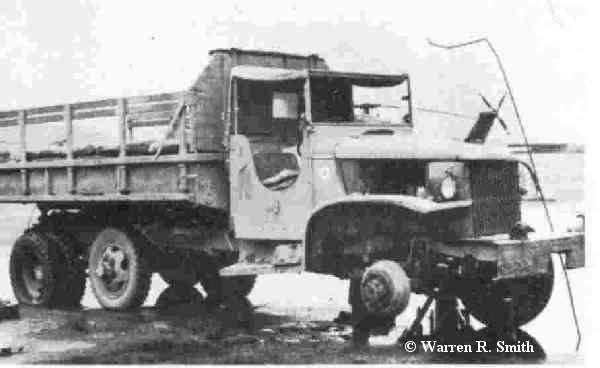 At
the former French Barracks in Da Nang early reveille had sounded
and the Marines of HMM-364, (pilots, gunners, varied maintenance skills
and crew chiefs) were being shuttled to the flight line in their ill begotten
six-by-six fondly referred to as "Sweetlips".
Upon arrival the crew chiefs commenced the detailed preflighting of nineteen
UH-34 "Dog" aircraft, maintenance personnel were performing minor repairs
and adjustments, the gunners were drawing their M-60s and ammunition from
the armory and hauling same to the aircraft and the pilots were gathering
in the ready room to receive their mission briefing.
At
the former French Barracks in Da Nang early reveille had sounded
and the Marines of HMM-364, (pilots, gunners, varied maintenance skills
and crew chiefs) were being shuttled to the flight line in their ill begotten
six-by-six fondly referred to as "Sweetlips".
Upon arrival the crew chiefs commenced the detailed preflighting of nineteen
UH-34 "Dog" aircraft, maintenance personnel were performing minor repairs
and adjustments, the gunners were drawing their M-60s and ammunition from
the armory and hauling same to the aircraft and the pilots were gathering
in the ready room to receive their mission briefing.
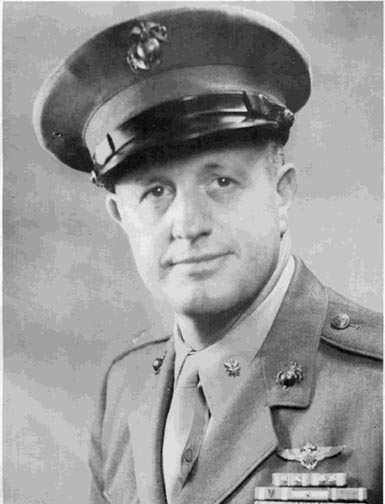 The
Commanding Officer and flight leader for the mission, LtCol.
John "Big John" LaVoy, arrived and delivered
a detailed briefing of the mission covering, conduct of the flight, supporting
elements, radio frequencies and procedures, troop pick up location and
insert location and emergency procedures. The emergency procedures,
in part, assigned all search an rescue (SAR) functions to either Maj. Braddon
or CWO McKee. Also, these two aircraft had spare parts and specialized
maintenance personnel aboard to conduct on-the-spot repairs if needed and
feasible considering disposition of enemy forces. The other helicopters
of the flight were to maintain formation integrity and direct their efforts
toward ARVN troop transport functions unless directed otherwise by LtCol.
LaVoy. HMM-364 and its support elements had been assigned the area
15 miles west northwest of Quang Ngai. Upon completion of the briefing
the pilots headed for their assigned aircraft. Each copilot again
performed a walk-around inspection of the aircraft with the crew chief
following to secure all access panels. A final crew briefing was
conducted by each aircraft commander to his specific crew and at the prescribed
time all nineteen aircraft engines were started (one engine oversped on
start and could not continue) and rotor systems engaged.
The
Commanding Officer and flight leader for the mission, LtCol.
John "Big John" LaVoy, arrived and delivered
a detailed briefing of the mission covering, conduct of the flight, supporting
elements, radio frequencies and procedures, troop pick up location and
insert location and emergency procedures. The emergency procedures,
in part, assigned all search an rescue (SAR) functions to either Maj. Braddon
or CWO McKee. Also, these two aircraft had spare parts and specialized
maintenance personnel aboard to conduct on-the-spot repairs if needed and
feasible considering disposition of enemy forces. The other helicopters
of the flight were to maintain formation integrity and direct their efforts
toward ARVN troop transport functions unless directed otherwise by LtCol.
LaVoy. HMM-364 and its support elements had been assigned the area
15 miles west northwest of Quang Ngai. Upon completion of the briefing
the pilots headed for their assigned aircraft. Each copilot again
performed a walk-around inspection of the aircraft with the crew chief
following to secure all access panels. A final crew briefing was
conducted by each aircraft commander to his specific crew and at the prescribed
time all nineteen aircraft engines were started (one engine oversped on
start and could not continue) and rotor systems engaged.
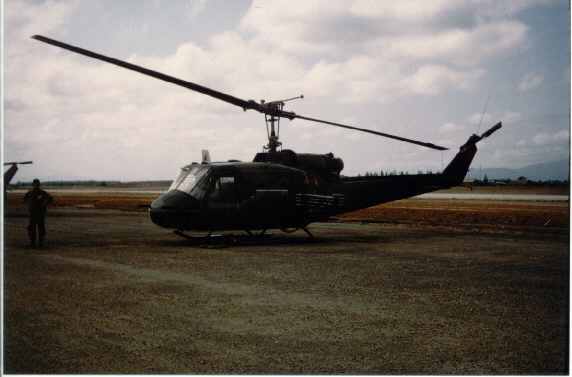 Meanwhile
on the southeastern end of the 5,000 ft. long Da Nang airstrip the same
general procedures were being accomplished by U.S. Army personnel of Dragon
Flight, 52nd Aviation
Battalion whose radio call signs were "Dragon 1, 2, 3, 4 and
Dragon Six (the recognized call sign for a commanding officer is his unit
call sign followed by "six"), in preparing five UH-1B
"HUEY" gun ships assigned to support the troop insert of HMM-364.
The Army flight leader was Captain Jack "Woody" Woodmansee, the Commanding
Officer of the unit.
Meanwhile
on the southeastern end of the 5,000 ft. long Da Nang airstrip the same
general procedures were being accomplished by U.S. Army personnel of Dragon
Flight, 52nd Aviation
Battalion whose radio call signs were "Dragon 1, 2, 3, 4 and
Dragon Six (the recognized call sign for a commanding officer is his unit
call sign followed by "six"), in preparing five UH-1B
"HUEY" gun ships assigned to support the troop insert of HMM-364.
The Army flight leader was Captain Jack "Woody" Woodmansee, the Commanding
Officer of the unit.
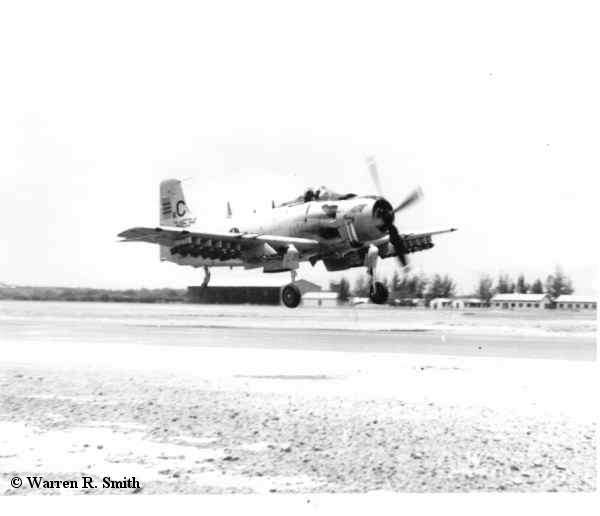 Elsewhere
on the field two A-1H"Skyraiders" of the Vietnam Air Force (VNAF) were being prepared to deliver heavier
direct air support if required. A U.S. Air Force L-19 "Bird Dog",
with a U.S. Air Force forward air controller (FAC) in the front seat and
a VNAF FAC in the rear seat, was also preparing to join the search and
destroy mission package.
Elsewhere
on the field two A-1H"Skyraiders" of the Vietnam Air Force (VNAF) were being prepared to deliver heavier
direct air support if required. A U.S. Air Force L-19 "Bird Dog",
with a U.S. Air Force forward air controller (FAC) in the front seat and
a VNAF FAC in the rear seat, was also preparing to join the search and
destroy mission package.
One hundred miles south of Da Nang in theProvince
of Quang Ngai, at the Quang Ngai Airfield approximately 640
Army of the Republic of Vietnam (ARVN) soldiers were cleaning their individual
weapons, drawing ammunition and otherwise insuring their combat equipment
was in order. Helicopter support teams were forming these troops
into helicopter assault elements of approximately ten men each in anticipation
of HMM-364's transport helicopter arrival.
Back at Da Nang LtCol. LaVoy (Yankee Kilo Six) completed
radio checks with his eighteen aircraft, and the five Army HUEYs.
Da Nang Ground Control cleared the Yankee Kilo flight of eighteen UH-34s
to taxi to the runway followed by the Tower's clearance for take off.
LtCol. LaVoy lifted off, gained transitional lift and settled into a climbing
right hand turn to allow the following aircraft to rendezvous on him.
Soon there were formed four divisions of four aircraft each and a section
of two aircraft in trail. The two in trail were the SAR/MAINT. aircraft
piloted by Maj. John Braddon, the squadron's Maintenance Officer, and CWO-3
Dennis T McKee. Dragon Six and his flight of five HUEY gun ships
joined with the Yankee Kilo flight and all turned south toward the city
of Quang Ngai.
The flight to Quang Ngai was without incident and the
weather was a beautiful CAVU (ceiling and visibility unlimited) day.
Upon arrival at Quang Ngai the eighteen Dogs and five HUEYs were
refueled. Another detailed briefing was conducted with the Yankee
Kilo pilots, the Dragon Flight, the ARVN commanders, two crews of VNAF
UH-34s which would join the end of the flight and Colonel Robert Merchant
the OPERATION SHUFLY commander who had tasked this search and destroy
mission. Upon completion of the briefing the first assault wave or
troops were loaded aboard the eighteen (16 USMC and 2 VNAF) UH-34s.
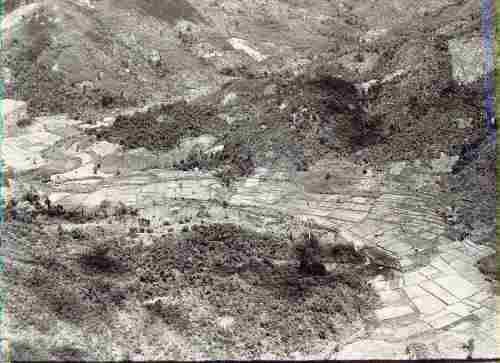 Upon
reaching the troop insert area, known as Do Xa, it was found to be quite
rugged and there was only one area large enough to land eighteen UH-34s
at one time. The landing zone (LZ) was
dominated by high ground on three sides similar to a box canyon with the
open end facing west. The high ground was permeated with numerous
caves on the cliff faces. The prevailing wind was from the south
which dictated a final approach from the north to land into the wind.
The USAF Bird Dog with the two FACs was orbiting high and dry, probably
higher than 2,500 ft. above ground level. Also orbiting at 5,000
feet, or higher, was a CIA operated Helio Courier STOL aircraft with Colonel
Merchant and an Army Colonel (possibly Col. Sullivan) who was the senior
advisor for I Corps aboard..
Upon
reaching the troop insert area, known as Do Xa, it was found to be quite
rugged and there was only one area large enough to land eighteen UH-34s
at one time. The landing zone (LZ) was
dominated by high ground on three sides similar to a box canyon with the
open end facing west. The high ground was permeated with numerous
caves on the cliff faces. The prevailing wind was from the south
which dictated a final approach from the north to land into the wind.
The USAF Bird Dog with the two FACs was orbiting high and dry, probably
higher than 2,500 ft. above ground level. Also orbiting at 5,000
feet, or higher, was a CIA operated Helio Courier STOL aircraft with Colonel
Merchant and an Army Colonel (possibly Col. Sullivan) who was the senior
advisor for I Corps aboard..
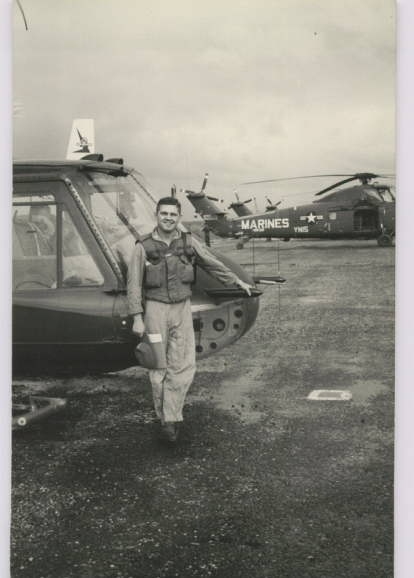 Capt.
Woodmansee (now Lieutenant General, USA (Ret) relates, "Tactically
we flew in two sections of two UH-1B gun ships each. I, as the leader
was unattached and could fly with either section that had the most enemy
to engage. I formed the two sections of guns ahead of and to my right
and left. The flight of UH-34s were to our rear. We galloped
our inverted "V" shaped formation toward the LZ for a
low level pass, to recon it by fire, to see if it was defended or not.
I had one section of guns covering the 6 o'clock and the left (north) flank
of the LZ and the right section covering the right flank and the 12 o'clock
section of the LZ. I was in trail to see which one might draw fire.
In the event either did draw fire, the tactical procedure was for the gunner
to instantly throw out a smoke grenade. This would be the first signal
that one was taking fire and would mark the ground in the vicinity of same.
The wingman would then fire behind his lead aircraft as he saw the smoke
go out. From the mark on the ground we could generally figure out
where the fire was coming from".
Capt.
Woodmansee (now Lieutenant General, USA (Ret) relates, "Tactically
we flew in two sections of two UH-1B gun ships each. I, as the leader
was unattached and could fly with either section that had the most enemy
to engage. I formed the two sections of guns ahead of and to my right
and left. The flight of UH-34s were to our rear. We galloped
our inverted "V" shaped formation toward the LZ for a
low level pass, to recon it by fire, to see if it was defended or not.
I had one section of guns covering the 6 o'clock and the left (north) flank
of the LZ and the right section covering the right flank and the 12 o'clock
section of the LZ. I was in trail to see which one might draw fire.
In the event either did draw fire, the tactical procedure was for the gunner
to instantly throw out a smoke grenade. This would be the first signal
that one was taking fire and would mark the ground in the vicinity of same.
The wingman would then fire behind his lead aircraft as he saw the smoke
go out. From the mark on the ground we could generally figure out
where the fire was coming from".
"On the first pass, low level
at about 100 feet, all of my first four Dragon guns were throwing smoke
out both sides of the aircraft. I could see tracers criss crossing
the valley from both sides (only one out of five rounds were tracers).
At that time the fires were coming from the hill sides, not from the LZ.
I called Yankee Kilo Six (LtCol. LaVoy) and told him to break off his approach
to the zone, orbit, and allow us to get some of these fires suppressed.
He aborted the approach, climbed above the effective range of the enemy
fire and orbited. We started working all around the LZ with rockets
and machine guns. On one of my passes west to east, I was engaged
by a 50 cal. from the south side. There was a stream of tracers passing
about 10 feet under my helicopter for at least 10 seconds. One of
the Dragon guns from another section saw the fire and blasted it with both
rockets and machine gun fire. On one pass close to the hill on the
south side, a VC machine gun surprised us and opened up at point blank
range. My door gunner put a magazine of his M-14 right into the VC's
position causing the fire to stop".
"We were now about out of
ammunition and I asked the FAC if he had seen the action and could he direct
the Skyraiders onto the targets. He responded that he had been "too
high" to see anything and asked if I could mark the targets. I couldn't
believe what I had just heard and it took a few minutes for my blood pressure
to settle. When I regained my composure, I got a running start south
to north, popped over the southern ridge, got very low, below the machine
gun position on the north side that I was going to mark. I popped
up just over the machine gun position and my right door gunner threw a
smoke grenade right into the VC's position. I saw then that it was
a 50 cal. with two shoulder braces and a big ring sight like those on WW
II ships. The VC soldiers were wearing camouflage uniforms and pith
helmets. There were ditches leading back to caves in the hill.
We were within 25 feet of them and got a good look at them. When
my right door gunner threw smoke, the VC were getting up out of the ditch
and one was swinging the 50 cal. around to shoot us. My first section
leader was covering me from 1,000 feet when I called for him to suppress
the "smoke" so that we could get out of there safely. 1stLt. Bert
Coalson was right where he was supposed to be at my 6 o'clock position.
His four M-60 machine guns were capable of of depressing 60o,
swiveling 12o inboard and swiveling 45o outboard. Bert simply slowed to a 1,000 foot hover which allowed
his gunners to depress their machine guns and place a stream of fire around
the smoke grenade. It would have been very hard for the VC to hide
in the ditches with Burt firing almost straight down upon them. We
never heard from that gun the rest of the day".
"When the Skyraider attacked,
he missed badly and never did hit the 50 cal. position which was on a small
round hillock jutting out from the north ridge into the valley. It
was after several steep 40o dives that the Skyraider got stitched
from a weapon on the south side of the valley and pulled up with smoke
billowing from his 2,700 hp. Wright R-3350 engine".
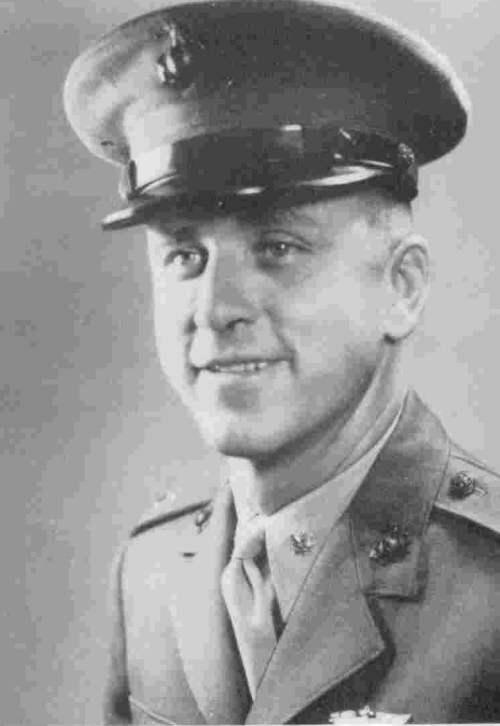 Maj.
Braddon, circling in the rescue/maintenance aircraft, saw the smoking
Skyraider come off target and turn toward Quang Ngai. He immediately
turned to follow the smoke trail left behind. Major Braddon found
the Skyraider on an unpaved air strip associated with a Special Forces
camp. The pilot had been unable to lower his gear and had landed
gear up. The pilot (Identified 40 years
later, see epilogue.) had not been injured
by enemy action but had smashed his face against the instrument panel,
breaking his sun glasses and cutting his face. Maj. Braddon hauled
him to Quang Ngai and turned back toward Do Xa, arriving as the narrative
of Dragon Six continues below.
Maj.
Braddon, circling in the rescue/maintenance aircraft, saw the smoking
Skyraider come off target and turn toward Quang Ngai. He immediately
turned to follow the smoke trail left behind. Major Braddon found
the Skyraider on an unpaved air strip associated with a Special Forces
camp. The pilot had been unable to lower his gear and had landed
gear up. The pilot (Identified 40 years
later, see epilogue.) had not been injured
by enemy action but had smashed his face against the instrument panel,
breaking his sun glasses and cutting his face. Maj. Braddon hauled
him to Quang Ngai and turned back toward Do Xa, arriving as the narrative
of Dragon Six continues below.
"LtCol. "Big John" LaVoy then
suggested (as ordered by Colonel. Robert Merchant orbiting high above
the conflict) that it was time to put the troops in. I reported
to him that Dragon Flight had essentially expended all of our ammo and
couldn't cover them properly going in. I requested that we go back
to Quang Ngai, rearm and decide what we wanted to do. I suggested
that we should pound the place with VNAF fixed wing aircraft before we
returned. My personal view was that we should look for another LZ.
That one was compromised. We had flown into an ambush (and we
still advised the Province Chiefs of our tactical intentions).
I wasn't at all convinced that we had made a dent in the enemy after our
first hour's flight.
"While we were regrouping,
rearming and refueling at Quang Ngai I learned of a very tragic screw up
relative to the insert which was being conducted some 30 miles west of
our zone. My parent unit had put troops in the LZ before the guns
arrived. When the guns arrived they fired on friendly ARVN troops
in the LZ".
"Big John" decided ( as ordered
by Colonel Merchant) that we were going back to Do Xa and going back
into the assigned LZ . As we were heading back toward the insert
area, I tried to get the USAF FAC to put all available Skyraiders into
the LZ with some heavy ordnance, but much to my chagrin the first FAC had
returned to Da Nang for "crew rest". He had been airborne since about
0600, about the time we took off, and couldn't fly anymore. The new
FAC didn't have any knowledge of the area, nor had he been briefed
on the tactical situation by the departing FAC, he was worthless.
I was irate and my blood pressure was rising again".
"As we approached the zone,
"Big John" directed my Dragon Flight of HUEYs to move forward and commence
suppressing the LZ just ahead of his first division of UH-34 "Dogs".
We raked the LZ with Big Johns division right on our tail and then
all hell broke loose. We were shooting. All the Dog door gunners
in the zone were shooting as the ARVN troops jumped from the helos and
scurried out of the immediate area for cover". It was the third division,
first wave, of Dogs into the zone that lost the first UH-34. It appeared
to me that the machine gun in the horseshoe position on the north wood
line commanded the LZ and was responsible for the lost aircraft".
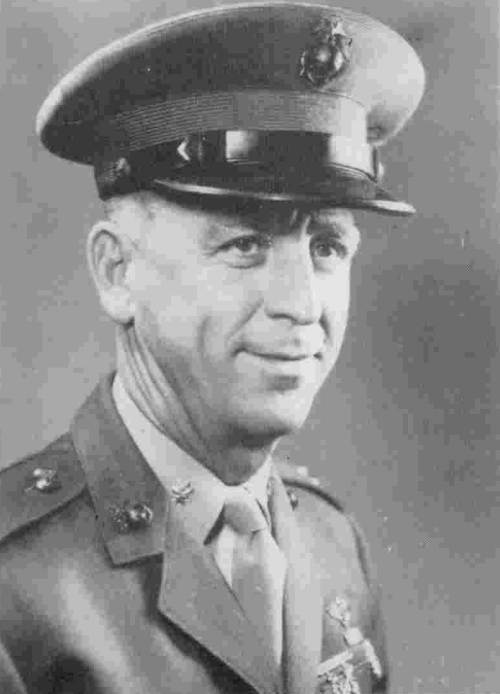 Maj.
Albert N. Allen was leading the fourth division of the first wave into
the zone when the aircraft loss mentioned above occurred. Maj. Allen's
recollections of the day follow.
Maj.
Albert N. Allen was leading the fourth division of the first wave into
the zone when the aircraft loss mentioned above occurred. Maj. Allen's
recollections of the day follow.
"It appeared to me that
Capt. Cunningham and I got stitched at about the same time. He was
lifting in a very steep climb, trying to clear some tall dead trees and
I was on final. The momentary distraction of the rounds flying through
my aircraft took my attention away from Capt. Cunningham's aircraft in
front of me. When I looked ahead again it was evident that Bill was
coming down. I was basically headed for the same spot he would fall
into. The other three aircraft of his division were well on their
way out of the zone. For a second, I thought we would get in the
same airspace at the same time. I lifted as soon as my troops were
out. The crew chief reported that we had taken multiple hits on the left
side of the aircraft which had entered low and exited high. One round
knocked out the main servo and hydraulic fluid was all 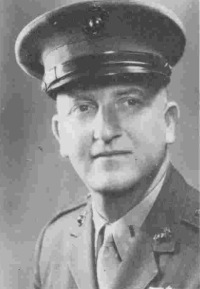 over
the place. The crew chief also determined that we had a leg of the
A-Frame (Main Transition Mount) severed. From the crew chief's descriptions
I knew that we needed to land and scrutinize the whole aircraft.
About a mile south of the zone I saw a sand bar in a river and intended
to land there. On final approach to the sand bar we received fire
again and I aborted. Earlier, on our way to the LZ, I had seen
an ARVN outpost and decided to proceed to it. We made it, shut the
aircraft down and soon the Maintenance aircraft piloted by CWO
McKee arrived. After the engineering chief checked the bird over,
he told me that if it were he, he would just fly the bird back to Quang
Ngai in that condition. I gave him permission to do so, which he
declined. They repaired it the next day and flew it out".
over
the place. The crew chief also determined that we had a leg of the
A-Frame (Main Transition Mount) severed. From the crew chief's descriptions
I knew that we needed to land and scrutinize the whole aircraft.
About a mile south of the zone I saw a sand bar in a river and intended
to land there. On final approach to the sand bar we received fire
again and I aborted. Earlier, on our way to the LZ, I had seen
an ARVN outpost and decided to proceed to it. We made it, shut the
aircraft down and soon the Maintenance aircraft piloted by CWO
McKee arrived. After the engineering chief checked the bird over,
he told me that if it were he, he would just fly the bird back to Quang
Ngai in that condition. I gave him permission to do so, which he
declined. They repaired it the next day and flew it out".
Back at Do Xa, the narrative
of Dragon Six continues: "It was only seconds after the bird went down
that Maj. John Braddon, circling high above, called that he was coming
down. There was not a tinge of hesitation as to what he was going
to do. He had been trained to react, not think a lot. He backed
off on the throttle, dropped the collective and commenced a tight spiraling
semi-autorotation toward the position of the downed UH-34 and its crew.
I told John to tell his left gunner that I would be hovering at his 7 o'clock
position and for the gunner not to shoot me. I positioned my helo
between John and the horseshoe machine gun position. We shot some
rockets into the trees above the position to get some air bursts, and hosed
down the area while John was patiently waiting to get the crew on board.
Then I heard John call, "Dragon Six, Yankee Kilo coming out", I turned
to follow him and shot under him as he was climbing out. My two sections
covered John on both his left and right flank and we got out without a
scratch but John had reported he had taken several hits, some of heavy
caliber, but no injuries. It was a miracle.
 Capt.
Cunningham's oil cooler had been destroyed by enemy fire. It
probably happened going into the zone but, it was a dead aircraft with
smoke billowing from the engine compartment and all the oil purged in a
very short period of time.
Capt.
Cunningham's oil cooler had been destroyed by enemy fire. It
probably happened going into the zone but, it was a dead aircraft with
smoke billowing from the engine compartment and all the oil purged in a
very short period of time.
Maj. Braddon's narrative follows: "We
took a lot of fire and our bird had many holes. As I lifted from
the zone with Cunningham, his crew and their machine guns in tow, I noticed
that some of the electrical components were not working and there were
new terrible sounds coming from the engine compartment. We came out
of the zone the same direction the empty birds were departing but were
so heavy we could not clear the ridge straight ahead. I elected
to go around a knob protruding into the LZ and up a creek bed. The
knob had a bunch of VC on it and we were treated to a spectacular view
of muzzle flashes all the way out. We landed at a friendly ARVN LZ
about half way to Quang Ngai to thoroughly check the extent of our battle
damage. We determined that one of the 50 cal. rounds had gone through
us end to end and and taken out the firewall junction box causing the electrical
problems. Another round had put a hole in the exhaust system which
accounted for the new engine noise. I finally decided that except
for some electrical damage and exhaust problems, I still had a bird whose
engine was developing satisfactory power, the transmission and drive trains
were in tact and we had radios, we were ready to rejoin the mission".
At the completion of the first
wave, the flight minus two troop transports and Maj. Braddon's aircraft
returned to Quang Ngai for fuel, ammunition and sixteen loads of ARVN troops.
Upon reaching Quang Ngai, a few more UH-34s were determined not to be airworthy
due to battle damage and were shut down.
Gen. Woodmansee's
narrative continues: Upon our return to the contested LZ that
afternoon. Dragon Flight did not recon the LZ with fire because we
had friendly troops in the zone. Rather, we set our normal tactical
high perch position at 1,000 feet with each section of guns running
race track patterns ( one at the 9 o'clock position of the LZ and the other
at the 3 o'clock position) to cover the Dogs approach to the LZ.
Before LtCol. LaVoy's lead division had even flared for landing, intense
fire was again received. It came from places I had anticipated but
there was one new location, the north perimeter of the zone! We were
in another fire fight as intense as the first wave of UH-34s experienced
in the zone off-loading their troops. It was very confusing to receive
as much fire now with " with friendly troops in the area" as we did
when friendlies were not in the area 45 minutes ago. With the tragic
incident which occurred 30 miles west of us in mind, at one time I thought
we might be getting ourselves into a "friendly fire fight".
This thought didn't last long however because we were getting our ass shot
from within the LZ and were compelled to return fire".
"We finally realized that
the first wave of ARVNs into the zone had headed for the ridge line on
the north side of the LZ. They had all booked it for the high
ground without leaving anyone to provide security for the LZ. This
action had allowed the VC to move a machine gun down to the northern
perimeter of the zone. We basically repeated the scenario of the
first wave in. We received intense enemy fire with many of the helicopters,
including Dragon Flight, getting drilled again. This time however
the battle damage to the transports did not stop them. They were
tough old birds with some equally tough crews. We completed the second
wave and again headed for Quang Ngai. Enroute we observed Maj. Braddon
join back up with the flight at the tail-end-charlie position. I
overheard Yankee Kilo Six inquire as to his ability to continue.
John advised his CO of the damage but said he was, "Good to Go."
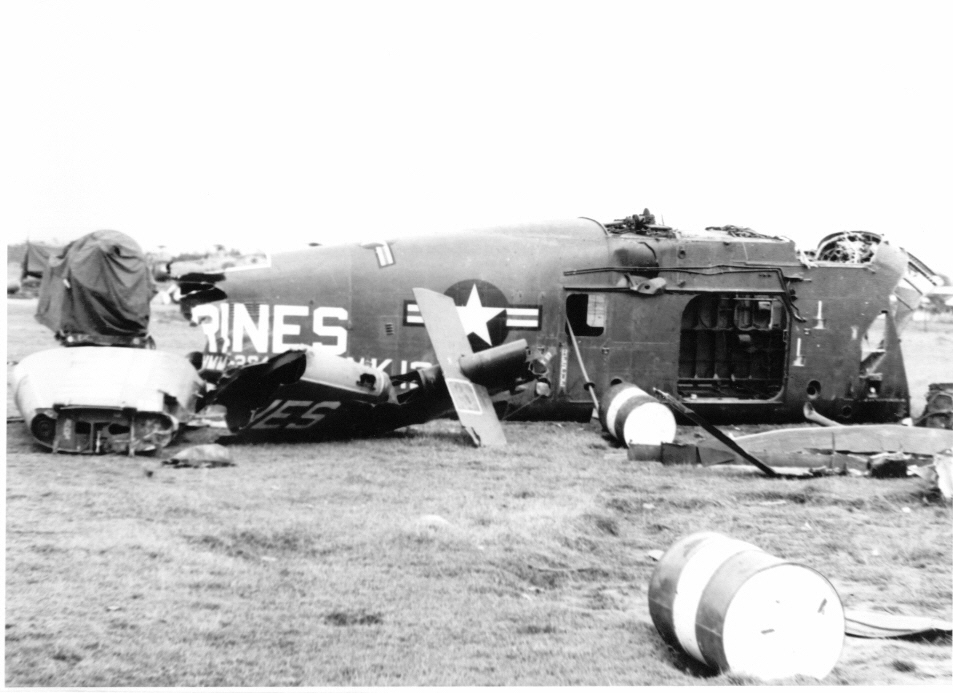 The
Quang Ngai turn-a -round was completed quickly. several more aircraft
were deemed not to be airworthy and shut down (one
lost turns settled into a stream and beat itself to death). The
flight back to Do Xa now consisted of the 5 Dragon Flight guns, approximately
9 USMC UH-34s, 2 VNAF UH-34s, and two SAR/MAINT aircraft. The third
wave scenario played out much like the two previous visits to the zone.
The major difference was that the intensity of the fire was diminished
but not yet eliminated. A number of aircraft received additional
hits but none were down and injuries, if any, were not serious.
The
Quang Ngai turn-a -round was completed quickly. several more aircraft
were deemed not to be airworthy and shut down (one
lost turns settled into a stream and beat itself to death). The
flight back to Do Xa now consisted of the 5 Dragon Flight guns, approximately
9 USMC UH-34s, 2 VNAF UH-34s, and two SAR/MAINT aircraft. The third
wave scenario played out much like the two previous visits to the zone.
The major difference was that the intensity of the fire was diminished
but not yet eliminated. A number of aircraft received additional
hits but none were down and injuries, if any, were not serious.
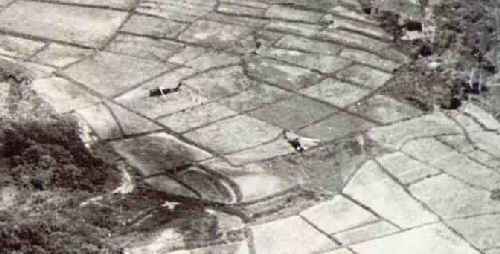 Maj.
Braddon recalls the final softening fire power delivered to the LZ by Dragon
Flight just prior to the final troop insert, "Jack Woodmansee took on
machine gun positions in and around the LZ by firing rockets and having
a US Army observer on the ground adjust his fire until he pinpointed the
position of each of the machine guns and then the Dragon Flight delivered
salvos of 2.75 EFARs. It was an incredible display of courage and
determination." On the fourth and final
wave one, of the two, VNAF UH-34s was downed (there
are now two birds down in the zone) and again
Maj. Braddon raced down off his perch to extract the crew. The VNAF
Dog was equipped with old M-1911 air cooled 30 cal. machine guns as opposed
to the M-60s on the Yankee Kilo aircraft. The VNAF crews loaded their
M-1911 guns and placed them in firing position out the windows. Maj.,
Braddon recalls, "Those big guns, firing
Maj.
Braddon recalls the final softening fire power delivered to the LZ by Dragon
Flight just prior to the final troop insert, "Jack Woodmansee took on
machine gun positions in and around the LZ by firing rockets and having
a US Army observer on the ground adjust his fire until he pinpointed the
position of each of the machine guns and then the Dragon Flight delivered
salvos of 2.75 EFARs. It was an incredible display of courage and
determination." On the fourth and final
wave one, of the two, VNAF UH-34s was downed (there
are now two birds down in the zone) and again
Maj. Braddon raced down off his perch to extract the crew. The VNAF
Dog was equipped with old M-1911 air cooled 30 cal. machine guns as opposed
to the M-60s on the Yankee Kilo aircraft. The VNAF crews loaded their
M-1911 guns and placed them in firing position out the windows. Maj.,
Braddon recalls, "Those big guns, firing  those
big rounds out of the aircraft, bounced my flight helmet up and down on
my head all the out of the zone. Also, as on retrieving Capt. Gunninghams
crew, I had a devil of a time getting out of the LZ because we were so
heavy. We had a normal crew of two pilots, a crew chief, a gunner,
plus the rescued four plus two mechanics to help retrieve a downed bird
and a 500 lb. box of spare parts and tools". "I especially remember
my copilot, Eddie Moore. Prior to deploying
to Vietnam, Eddie had told me he didn't want to fly with me anymore after
practicing low level, high speed inserts in the Santa Ana Mountains.
He didn't appreciate the way the old fighter pilot was doing DiDos in the
mountains in an H-34. When I asked Eddie to be my copilot
he didn't hesitate once even though he knew it could be very dangerous.
That's what made that day so special. What a terrific guy."
those
big rounds out of the aircraft, bounced my flight helmet up and down on
my head all the out of the zone. Also, as on retrieving Capt. Gunninghams
crew, I had a devil of a time getting out of the LZ because we were so
heavy. We had a normal crew of two pilots, a crew chief, a gunner,
plus the rescued four plus two mechanics to help retrieve a downed bird
and a 500 lb. box of spare parts and tools". "I especially remember
my copilot, Eddie Moore. Prior to deploying
to Vietnam, Eddie had told me he didn't want to fly with me anymore after
practicing low level, high speed inserts in the Santa Ana Mountains.
He didn't appreciate the way the old fighter pilot was doing DiDos in the
mountains in an H-34. When I asked Eddie to be my copilot
he didn't hesitate once even though he knew it could be very dangerous.
That's what made that day so special. What a terrific guy."
By the end of the fourth wave
most VC fire had been eliminated in the immediate vicinity of the LZ, but
some sporadic fire from distant sources remained. The ARVN troops
had finally secured the Do Xa LZ. The flight returned to Quang Ngai
to pick up those crews which no longer had flyable aircraft to transport
them back to Da Nang.
While there it was learned that
there were some ARVN routine (not life threatening) medevacs in the
Do Xa area. Maj. Braddon volunteered to go back for them with
Dragon Six providing cover. Upon arrival at the LZ the two aircraft
shut down and the crews got out. Maj. Braddon relates, " Jack
Woodmansee walked up to me, held out his hand and said he would like to
shake the hand of a brave man. I was overwhelmed and still am.
I have never seen a display of courage such as Jack put on that day.
It was the greatest compliment I have ever received."
Maj. Braddon and Dragon Six returned
the routine medevacs to Quang Ngai, it was now dark. Maj. Braddon
continues, "We refueled our beat up old Dog with all its holes, non
functioning electrical components and an engine sounding like a threshing
machine and, with Jack on my wing, flew back to Da Nang. I still
remember flying along the coast, the cockpit lit up with numerous warning
lights indicating various system problems and failures, seeing Jack's HUEY
on my wing and hoping the beat up old Dog would get us home. It did.
Gen. Woodmansee's memories:
"We all returned home to Da Nang and arrived there after dark.
I had not suffered any casualties in Dragon Flight, it was a miracle.
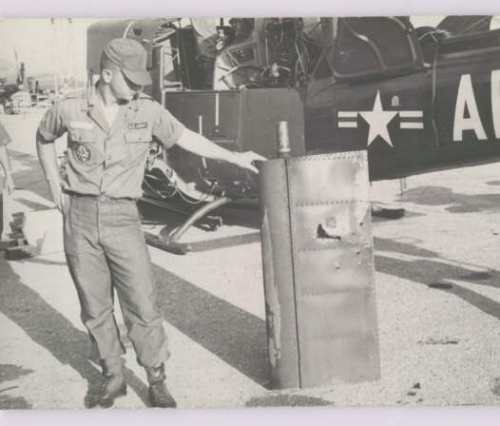 That
evening LtCol. LaVoy advised me that HMM-364 had another mission into the
same LZ the next day at first light. I advised him that I needed
some daylight to look over our helos very carefully since we had all
been hit. I said if I could have a couple hours to preflight,
we could have all flyable aircraft down to Quang Ngai by 1000. The
squadron went down early and waited for us. The 52nd Aviation Battalion
offered to provide other gun ships for HMM-364 but "Big John" told my battalion
commander that he would prefer to wait for Capt. Woodmansee and the Dragon
Flight. That really pumped my guys up. There wasn't anything
we wouldn't do for the squadron before that statement from LtCol. LaVoy,
but after that, the mutual respect and support between our two units was
a thing of beauty".
That
evening LtCol. LaVoy advised me that HMM-364 had another mission into the
same LZ the next day at first light. I advised him that I needed
some daylight to look over our helos very carefully since we had all
been hit. I said if I could have a couple hours to preflight,
we could have all flyable aircraft down to Quang Ngai by 1000. The
squadron went down early and waited for us. The 52nd Aviation Battalion
offered to provide other gun ships for HMM-364 but "Big John" told my battalion
commander that he would prefer to wait for Capt. Woodmansee and the Dragon
Flight. That really pumped my guys up. There wasn't anything
we wouldn't do for the squadron before that statement from LtCol. LaVoy,
but after that, the mutual respect and support between our two units was
a thing of beauty".
"As I recall, we could only
put 4 HUEYs in the air the next day. Upon arriving with our first
wave of troops, we were pleased to see that ARVN troops left there the
night before had cleared the LZ and the VC had gone back into the hills.
The four guns we had were sufficient and the second day was , thankfully,
pretty quiet".
Awards for Valor
(Navy Cross)
In collecting information for this narrative the Webmaster
has communicated with numerous Marines who were present at Do Xa.
They all, without exception, praise Captain Jack Woodmansee's extraordinary
actions in commanding Dragon Flight and the superior support they rendered
on 27 April 1964. All recall that Lieutenant Colonel John LaVoy had
submitted, through the Marine Corps chain of command, a recommendation
that Captain Woodmansee be awarded the Navy Cross for his gallant, and
life threatening actions of that day. Recent communications with
Jack Woodmansee indicate that the Naval Service nor the Marine Corps acted
upon that recommendation. The U.S. Army however did award him an
Air Medal w/V device for his actions. In retrospect it appears the
Commandant of the Marine Corps was opposed, at that time, to arming Marine
helicopters as gun ships, preferring instead to use tactical fighters.
The Commandant had been attempting, unsuccessfully, to get USMC fighters
into Vietnam to support USMC helicopter operations. Additionally,
it is believed that no Marine, to date, had been awarded the Navy Cross
for valor in Vietnam. This leads the Webmaster to the conclusion
that it simply was inappropriate for the first Navy Cross awarded to go
to an Army aviator flying gun ships. Jack Woodmansee, Lieutenant
General U.S. Army(Ret) has stated, "I was aware, and took great personal
pride in the fact, that the awards board of HMM-364 had recommended me
for the Navy Cross. I knew they were sincere, and that meant a great
deal to me."
(Silver Star)
Maj. John R. Braddon
(Distinguished Flying Cross)
The events of 27 April 1964
lead to the issuance of the first Distinguished Flying Crosses awarded
to Marine Corps helicopter pilots in Vietnam.
The award process is not merely handing out medals after the action from
various bins in the supply system. The unit supported must first
believe the support was exceptional, justify and describe it thoroughly,
in writing, why individuals (or one person) should be considered for recognition.
This proceeds through the chain of command. For reasons unknown by
most they are sometimes denied completely, lost in the paperwork shuffle,
or on occasion upgraded say from a recommendation for the Distinguished
Flying Cross to the Silver Star. On other occasions they are downgraded
but the individual is still recognized for personal valor. In any
event the process could take several months to travel through the command
structure, again be reviewed at Headquarters, United States Marine Corps
and if approved the citation is prepared and returned through that same
chain of command to the recipient.
In the case of the Do Xa troop insert, the original
award recommendations were; a Distinguished Flying Cross for the flight
leader, LtCol. LaVoy; remaining aircraft commanders the single mission
Air Medal; for all copilots the Navy and Marine Corps Commendation Medal;
and for the remaining crew members the Navy and Marine Corps Achievement
Medal. During the review process by higher headquarters, those were
ultimately revised to; the Silver Star for Maj. Braddon; Distinguished
Flying Crosses for all the remainder of the aircraft commanders and 1stLt.
Edward P. Moore who was Maj. Braddon's copilot; single mission Air Medals
for all other copilots; and the Navy and Marine Corps Commendation Medal
for the remaining crew members. Known DFC recipients:
LtCol. John H. LaVoy
Capt. William Cunningham
Capt. Grant T. Yule
1stLt. Charles R. Upshaw
1stLt. Ronald V. DeBrincat |
Maj. Goddel P. Warren
Capt. Peter A. Love
Capt. William T. Burrows
1stLt. Charles C. Wood
1stLt. Melvin T. Graves
CWO-3 Dennis T. McKee |
Maj. Albert N. Allen
Capt. Charles E. Cannon
Capt. Howard G. Taylor
1stLt. Richard P. L. Bland
1stLt. Edward P Moore |
(Air Medal)
Known Air Medal recipients: (Your
webmaster believes all copilots and crew chiefs received SMAMs)
| Capt. William B. Crane |
1stLt. Michael D. Barker
Sgt. Gerald M. Thomas |
1stLt. Charles A. Runsvold |
(Navy and Marine Corps Commendation
Medal)
All gunners; (your Webmaster
solicits help in determining their names.)
(Gallantry Cross Medal - Republic
of Vietnam)
Seventeen Marines of HMM-364 received the Gallantry
Cross Medal. They were:
LtCol. John H. LaVoy
Maj. John R. Braddon **
Capt. Charles E. Cannon
Capt. Howard G. Taylor
1stLt. Richard P. L. Bland*
1stLt. Edward P. Moore |
Maj. Goddel P. Warren
Capt. William Cunningham
Capt. Grant T. Yule
1stLt. Charles R. Upshaw
1stLt. Ronald V. DeBrincat**
x |
Maj. Albert N. Allen
Capt. Peter A. Love
Capt. William J. Burrows
1stLt. Charles C. Wood
1stLt. Melvin T. Graves
CWO-3 Dennis T. McKee** |
Most were with the Bronze Star, * denotes the
Silver Star, ** denotes the Gold Star
A Complete Listing of
Personnel Involved on the Do Xa Operation
Epilogue
Captain Woodmansee was approaching the end of his tour
and his replacement had checked into Dragon Flight. The
soon to be commanding officer was flying as Dragon Six's copilot that day
on his first "introduction to Vietnam missions". General Woodmansee
recalls that at the end of that day his copilot shook his head rather agitatedly
and said, "Damn, is every day like this?"
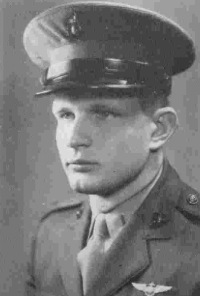 1stLt.
Jim Nugent was the Operations Duty Officer on the day of the insert.
The Marines of
1stLt.
Jim Nugent was the Operations Duty Officer on the day of the insert.
The Marines of 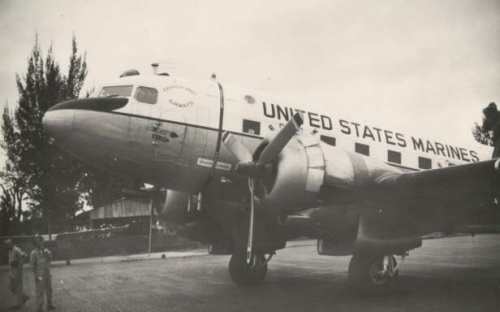 HMM-364
which were not tasked to fly that day gathered in the Ready Room and by
radio relay or other means were able to monitor the progress of the mission
100 miles to the south. Shortly after the mission commenced it became
apparent that ammunition supplies at the Quang Ngai staging point would
not be sufficient. A USMC DC-3 or C-47 (also known as the "Gooney
Bird") at Da Nang was tasked to make resupply flights to Quang Ngai.
Those left behind assisted in loading the airplane. The pilot was
CWO-3 Frank Scroggs or MGySgt. Pat O'Neill. This plane made administrative
and R&R flights all over Southeast Asia. More times
than not it came home with one engine feathered.
HMM-364
which were not tasked to fly that day gathered in the Ready Room and by
radio relay or other means were able to monitor the progress of the mission
100 miles to the south. Shortly after the mission commenced it became
apparent that ammunition supplies at the Quang Ngai staging point would
not be sufficient. A USMC DC-3 or C-47 (also known as the "Gooney
Bird") at Da Nang was tasked to make resupply flights to Quang Ngai.
Those left behind assisted in loading the airplane. The pilot was
CWO-3 Frank Scroggs or MGySgt. Pat O'Neill. This plane made administrative
and R&R flights all over Southeast Asia. More times
than not it came home with one engine feathered.
There were approximately 51,000 rounds of ammunition
expended by the "Yankee Kilo" Marines alone this day. This figure
was arrived at by the standard load given each helicopter prior to any
mission plus the emergency resupply by Gunnery Sergeant Scroggs mentioned
above. It is unknown how many rounds "Dragon Flight" expended.
After Action Reports indicated the caliber of troops
encountered and items brought out which had been left behind by the VC.
There was a field hospital there where they found hand written medical
books. There were weapons of every kind and hand written instructions
on how to disarm and rearm every mine of every nationality you could imagine.
These items, and more, were later put on display in Da Nang.
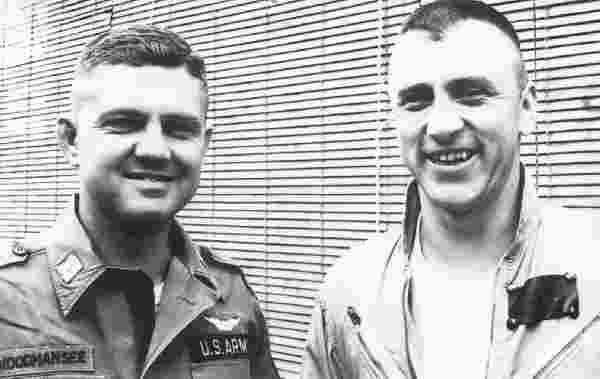 Upon
returning to Da Nang the evening of 27 April 1964 the pilots of Dragon
Flight and HMM-364 gathered at the Da Nang Officers Club to celebrate,
not hold a wake, for their safe return. The drink of choice was a
"Nickalashka". This concoction was CaptainWoodmansee's cultural contribution to Dragon Flight soon after he assumed command.
The pilots of Dragon Flight, believing the pilots of HMM-364 were in need
of some cultural refinement, had introduced to them to the "Nickalashka"
the night before the Do Xa ARVN troop insert.
Upon
returning to Da Nang the evening of 27 April 1964 the pilots of Dragon
Flight and HMM-364 gathered at the Da Nang Officers Club to celebrate,
not hold a wake, for their safe return. The drink of choice was a
"Nickalashka". This concoction was CaptainWoodmansee's cultural contribution to Dragon Flight soon after he assumed command.
The pilots of Dragon Flight, believing the pilots of HMM-364 were in need
of some cultural refinement, had introduced to them to the "Nickalashka"
the night before the Do Xa ARVN troop insert.
Nickalashka
One center section slice of lemon, 1/4" thick
Cover one half with sugar, the other half with coffee
grounds
Place all in mouth and chew it up, but do not swallow
Drain a shot of cognac through the mixture, then swallow
it all
05-15-04
 Forty
years later, the VNAF Skyraider pilot has been identified, he was Lieutenant
Hoa Van Pham who continued to fight until the end of the war in 1975.
One week before the fall of Saigon to North Vietnam, Hoa managed to get
his wife and four children into the cargo hold of a C-130 and flown to
safety in the United States. His son, Quang, who now owns a Newport
Beach dot-com, was 10. Hoa's daughters were 11, 6, and 2.
Forty
years later, the VNAF Skyraider pilot has been identified, he was Lieutenant
Hoa Van Pham who continued to fight until the end of the war in 1975.
One week before the fall of Saigon to North Vietnam, Hoa managed to get
his wife and four children into the cargo hold of a C-130 and flown to
safety in the United States. His son, Quang, who now owns a Newport
Beach dot-com, was 10. Hoa's daughters were 11, 6, and 2.
While his family huddled in a
confused, if free, world in the Philippines, Guam, then a Fort Chaffee,
Ark., refugee camp, Hoa stayed for the final, futile fight and was quickly
captured and sent to a re-education camp. He spent 12 years in the
harshest rural regions of North Vietnam, doing hard labor and being fed
rice and water every other day. And being told repeatedly of the
evils of the totalitarian U.S. regime.
Finally, in 1987, Hoa was freed
and lived with his mother-in-law in Saigon while awaiting paperwork that
would send him to America. It took five years. He was under
constant watch and wasn't allowed to work.
By the time he arrived in California,
his family members were strangers. His children were grown, educated
and successful. His son, Quang X. Pham, was a U.S. Marine helicopter pilot,
stationed in Tustin. Quang has published a memorial to his deceased
father which can be viewed here; www.phamvanhoa.com.
Information provided by:
Jack
"Woody" Woodmansee, LtGen. USA(Ret)
John Braddon,
Col. USMC(Ret)
J. R. "Jim"
Nugent, former 1stLt. USMCR
Ronald V.
DeBrincat, former 1stLt. USMCR
Charles A. Runsvold, former 1stLt.
USMC
Dennis T. McKee, Maj. USMC(Ret)
Warren R. Smith, former Cpl. USMC
Franklin A. Gulledge, Jr., Maj.
USMC(Ret)
Quang X. Pham
Home
 At
the former French Barracks in Da Nang early reveille had sounded
and the Marines of HMM-364, (pilots, gunners, varied maintenance skills
and crew chiefs) were being shuttled to the flight line in their ill begotten
six-by-six fondly referred to as "Sweetlips".
Upon arrival the crew chiefs commenced the detailed preflighting of nineteen
UH-34 "Dog" aircraft, maintenance personnel were performing minor repairs
and adjustments, the gunners were drawing their M-60s and ammunition from
the armory and hauling same to the aircraft and the pilots were gathering
in the ready room to receive their mission briefing.
At
the former French Barracks in Da Nang early reveille had sounded
and the Marines of HMM-364, (pilots, gunners, varied maintenance skills
and crew chiefs) were being shuttled to the flight line in their ill begotten
six-by-six fondly referred to as "Sweetlips".
Upon arrival the crew chiefs commenced the detailed preflighting of nineteen
UH-34 "Dog" aircraft, maintenance personnel were performing minor repairs
and adjustments, the gunners were drawing their M-60s and ammunition from
the armory and hauling same to the aircraft and the pilots were gathering
in the ready room to receive their mission briefing.  The
Commanding Officer and flight leader for the mission,
The
Commanding Officer and flight leader for the mission,  Meanwhile
on the southeastern end of the 5,000 ft. long Da Nang airstrip the same
general procedures were being accomplished by U.S. Army personnel of Dragon
Flight, 52nd Aviation
Battalion whose radio call signs were "Dragon 1, 2, 3, 4 and
Dragon Six (the recognized call sign for a commanding officer is his unit
call sign followed by "six"), in preparing five
Meanwhile
on the southeastern end of the 5,000 ft. long Da Nang airstrip the same
general procedures were being accomplished by U.S. Army personnel of Dragon
Flight, 52nd Aviation
Battalion whose radio call signs were "Dragon 1, 2, 3, 4 and
Dragon Six (the recognized call sign for a commanding officer is his unit
call sign followed by "six"), in preparing five  Elsewhere
on the field two
Elsewhere
on the field two  Upon
reaching the troop insert area, known as Do Xa, it was found to be quite
rugged and there was only one area large enough to land eighteen UH-34s
at one time. The
Upon
reaching the troop insert area, known as Do Xa, it was found to be quite
rugged and there was only one area large enough to land eighteen UH-34s
at one time. The 

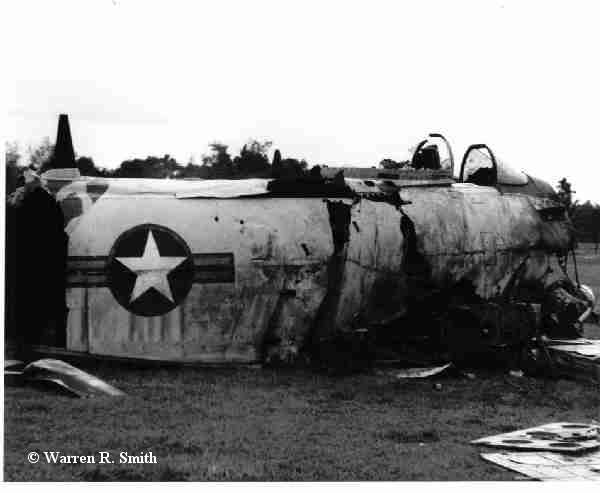
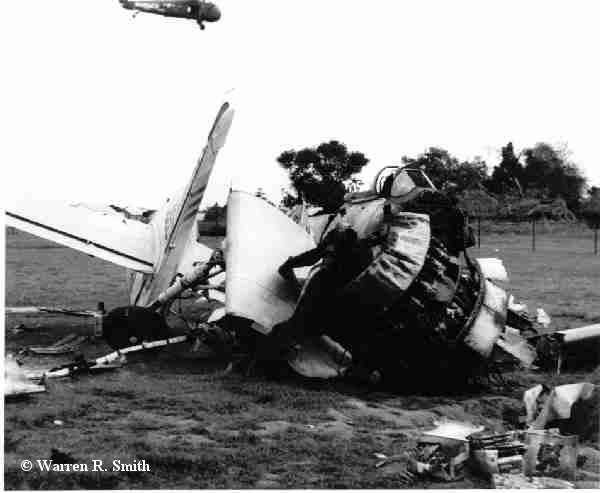

 over
the place. The crew chief also determined that we had a leg of the
A-Frame (Main Transition Mount) severed. From the crew chief's descriptions
I knew that we needed to land and scrutinize the whole aircraft.
About a mile south of the zone I saw a sand bar in a river and intended
to land there. On final approach to the sand bar we received fire
again and I aborted. Earlier, on our way to the LZ, I had seen
an ARVN outpost and decided to proceed to it. We made it, shut the
aircraft down and soon the Maintenance aircraft piloted by
over
the place. The crew chief also determined that we had a leg of the
A-Frame (Main Transition Mount) severed. From the crew chief's descriptions
I knew that we needed to land and scrutinize the whole aircraft.
About a mile south of the zone I saw a sand bar in a river and intended
to land there. On final approach to the sand bar we received fire
again and I aborted. Earlier, on our way to the LZ, I had seen
an ARVN outpost and decided to proceed to it. We made it, shut the
aircraft down and soon the Maintenance aircraft piloted by 
 The
Quang Ngai turn-a -round was completed quickly. several more aircraft
were deemed not to be airworthy and shut down
The
Quang Ngai turn-a -round was completed quickly. several more aircraft
were deemed not to be airworthy and shut down  Maj.
Braddon recalls the final softening fire power delivered to the LZ by Dragon
Flight just prior to the final troop insert, "Jack Woodmansee took on
machine gun positions in and around the LZ by firing rockets and having
a US Army observer on the ground adjust his fire until he pinpointed the
position of each of the machine guns and then the Dragon Flight delivered
salvos of 2.75 EFARs. It was an incredible display of courage and
determination." On the fourth and final
wave one, of the two, VNAF UH-34s was downed (
Maj.
Braddon recalls the final softening fire power delivered to the LZ by Dragon
Flight just prior to the final troop insert, "Jack Woodmansee took on
machine gun positions in and around the LZ by firing rockets and having
a US Army observer on the ground adjust his fire until he pinpointed the
position of each of the machine guns and then the Dragon Flight delivered
salvos of 2.75 EFARs. It was an incredible display of courage and
determination." On the fourth and final
wave one, of the two, VNAF UH-34s was downed ( those
big rounds out of the aircraft, bounced my flight helmet up and down on
my head all the out of the zone. Also, as on retrieving Capt. Gunninghams
crew, I had a devil of a time getting out of the LZ because we were so
heavy. We had a normal crew of two pilots, a crew chief, a gunner,
plus the rescued four plus two mechanics to help retrieve a downed bird
and a 500 lb. box of spare parts and tools". "I especially remember
my copilot,
those
big rounds out of the aircraft, bounced my flight helmet up and down on
my head all the out of the zone. Also, as on retrieving Capt. Gunninghams
crew, I had a devil of a time getting out of the LZ because we were so
heavy. We had a normal crew of two pilots, a crew chief, a gunner,
plus the rescued four plus two mechanics to help retrieve a downed bird
and a 500 lb. box of spare parts and tools". "I especially remember
my copilot,  That
evening LtCol. LaVoy advised me that HMM-364 had another mission into the
same LZ the next day at first light. I advised him that I needed
some daylight to look over our helos very carefully since we had
That
evening LtCol. LaVoy advised me that HMM-364 had another mission into the
same LZ the next day at first light. I advised him that I needed
some daylight to look over our helos very carefully since we had 
 HMM-364
which were not tasked to fly that day gathered in the Ready Room and by
radio relay or other means were able to monitor the progress of the mission
100 miles to the south. Shortly after the mission commenced it became
apparent that ammunition supplies at the Quang Ngai staging point would
not be sufficient. A USMC DC-3 or C-47 (also known as the
HMM-364
which were not tasked to fly that day gathered in the Ready Room and by
radio relay or other means were able to monitor the progress of the mission
100 miles to the south. Shortly after the mission commenced it became
apparent that ammunition supplies at the Quang Ngai staging point would
not be sufficient. A USMC DC-3 or C-47 (also known as the 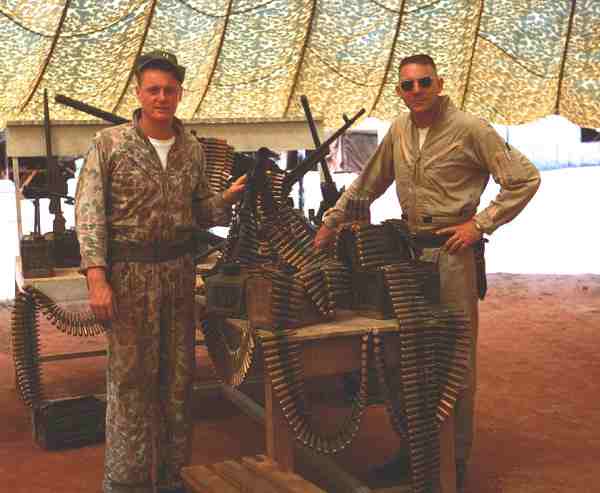
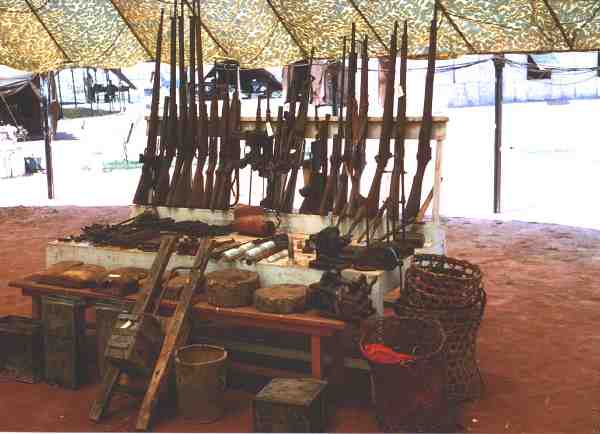
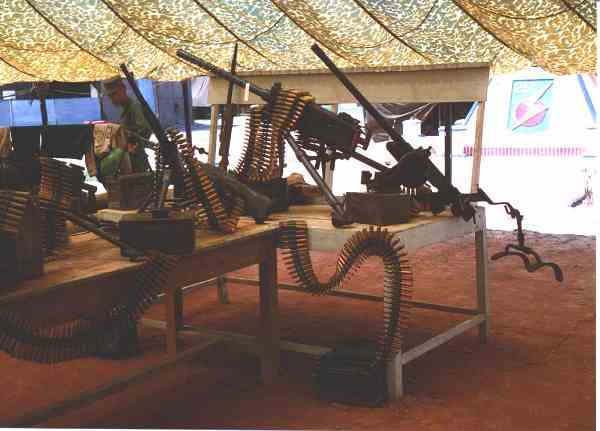
 Upon
returning to Da Nang the evening of 27 April 1964 the pilots of Dragon
Flight and HMM-364 gathered at the Da Nang Officers Club to celebrate,
not hold a wake, for their safe return. The drink of choice was a
"Nickalashka". This concoction was
Upon
returning to Da Nang the evening of 27 April 1964 the pilots of Dragon
Flight and HMM-364 gathered at the Da Nang Officers Club to celebrate,
not hold a wake, for their safe return. The drink of choice was a
"Nickalashka". This concoction was Forty
years later, the VNAF Skyraider pilot has been identified, he was Lieutenant
Hoa Van Pham who continued to fight until the end of the war in 1975.
One week before the fall of Saigon to North Vietnam, Hoa managed to get
his wife and four children into the cargo hold of a C-130 and flown to
safety in the United States. His son, Quang, who now owns a Newport
Beach dot-com, was 10. Hoa's daughters were 11, 6, and 2.
Forty
years later, the VNAF Skyraider pilot has been identified, he was Lieutenant
Hoa Van Pham who continued to fight until the end of the war in 1975.
One week before the fall of Saigon to North Vietnam, Hoa managed to get
his wife and four children into the cargo hold of a C-130 and flown to
safety in the United States. His son, Quang, who now owns a Newport
Beach dot-com, was 10. Hoa's daughters were 11, 6, and 2.